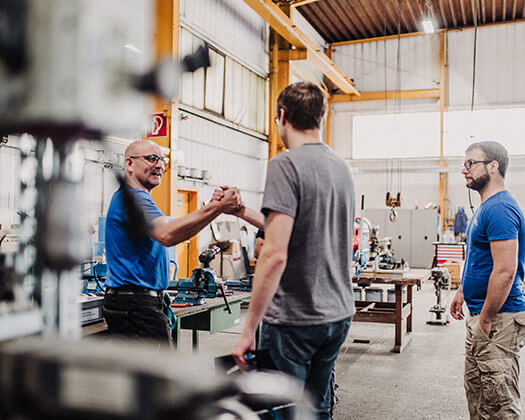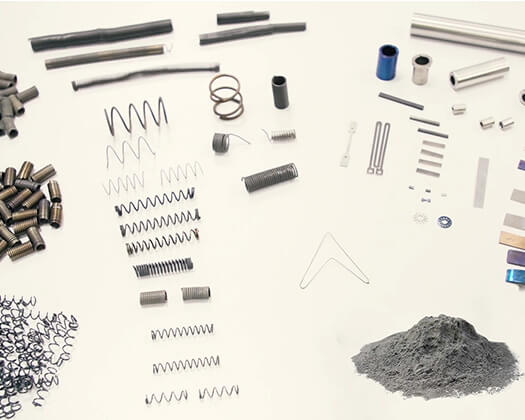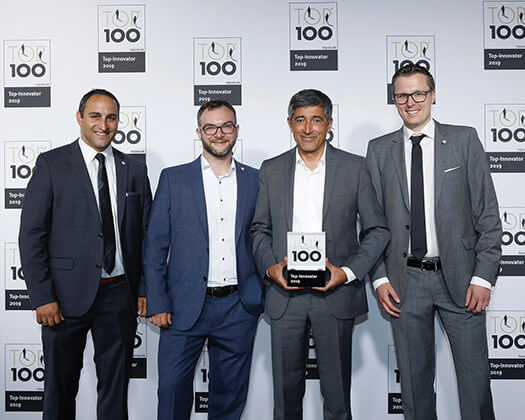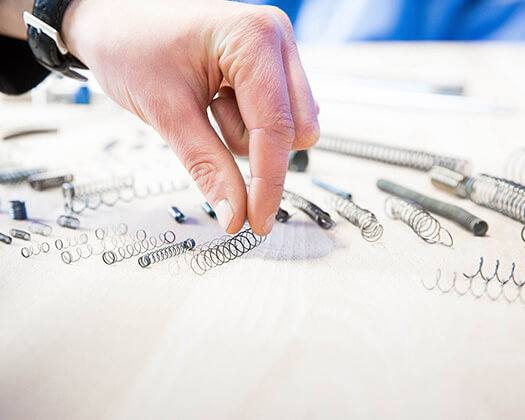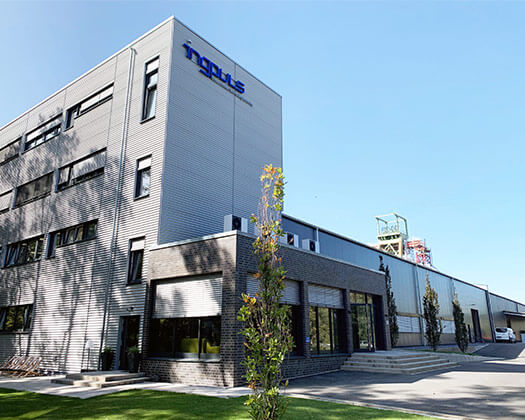
How can the quality of shape memory alloys / Nitinol be assured?
For providing quality assurance of NiTi-SMA, various test devices are available to you. Why these are used and which one you should chose, is outlined below. If you are interested in finding out more, please take a look at our free PDF course.
Tensile Test
From your conventional materials, i.e. metallic structural materials, you will be familiar with the tensile test. You would normally use this test as standard procedure for determining material parameters. We’ve already covered some of these SMA specific parameters in the section Application and Properties and provided further
characteristic specifications in our data sheets. Your free SMA course will provide you with a complete overview. In the following, you will learn how to determine these and other parameters.

DSC
One of the methods used is the so called DSC (Differential Scanning Calorimetry); a method also used in the development of conventional materials. It quantifies and provides information on the influence of the degree of deformation and heat treatment parameters. When determining shape memory alloy specific parameters, further characteristic values can be measured. These in particular result from the thermal analysis of your shape memory alloys.
You will apply the DSC to your shape memory alloy sample only in a condition that is free of loads. Also, measurement during a thermal analysis will provide transformation temperatures (equally in a load-free state). For example, you will obtain values for the key figures of As, Af, Ap, Ms, Mf, and Mp. The SMA course will answer your questions as to how exactly these key figures and the conversion enthalpy are measured and why this is important.
Microscopy
The microscopic properties of a shape memory alloy are determined by the structural composition of the material; more precisely by its microstructure. And in order to determine it, microscopy is used. If you take a close look at the complete and free course (download PDF here), you will learn which microscopy equipment
you can use for this purpose and what results you can expect to achieve. Based on the analysis of these values that you can draw conclusions about the properties of the SMA material.

Determination of key figures of superelastic shape memory alloys – mainly in medical technology
SMA with an active Af < RT
As mentioned before, some types of SMA exhibit superelastic behavior at room temperature (RT). These superelastic shape memory alloys are often used in medical technology where additional characterisation of the material and further investigations are necessary. A few of these additional criteria are defined by of the few ASTM standards. For a list outlining which additional parameters are important and why this is the case, please refer to the SMA course which you can download here.
Characterisation of pseudoplastic shape memory alloys – mainly in actuators
SMA with active As > RT
Several tests are required for characterising the behavior of your shape memory alloy actuator. This is where you determine how you can measure the maximum actuation force, the maximum stroke and the force for detwinning. Especially the procedural steps for measuring the detwinning force, as well as their interpretation, are of fundamental importance for the design of your actuator unit. These and other test arrangements, such as measures for determining heating or cooling parameters, can also be found in the SMA course.
Electrical resistance (actuators)
As outlined under “temperature gradients”, there are two possible ways of actuation for your element. Passively, this occurs via temperature differences between the actuator and its environment (e.g. liquids, air flow). However, you are also able to electrically switch your actuator. The heat required for this process is achieved by making use of the actuator’s inner electric resistance. The resistance of your actuator depends on a number of parameters that may not seem obvious at a first
glance. They are described in more detail in the free course. You will also learn how to use the electrical resistance for the precise and continuous control of your actuator’s position and how to determine – along with the EMS provided by Ingpuls – the suitable the suitable parameters for the electric currents of your actuator system.
Temperature and load dependency (actuators)
You should also always consider the dependency of your material properties on temperature and load for which various tests are required. The reason for this lies in the fact that the thermal equilibrium of the material is shifted by both temperature and mechanical stress. This often results in significant changes in the level of transformation temperatures and the material’s additio properties. Mechanical stresses, for instance, cause an upward shift of the transformation temperatures (Clausius-Clapeyrion equation). In order to investigate this dependency, we determine special characteristic curves. They provide us with important information that we can additionally refer to when designing your shape memory alloy components.

Cyclic behaviour (actuators)
If your shape memory alloy element passes through many operating cycles, you may observe a loss of actuation force or stroke. We determine this cyclical behaviour in endurance tests, thereby indicating any loss of actuation force and stroke as well as the shift in transformation temperatures over the service life. In general,
you would want to avoid a shift of your shape memory alloys characteristic values when in operation. In the SMA course you will learn about the measures you can take that will make the losses on these variables negligible. Particular attention is paid to pre-cycled components and special electronics. Why not take a look at it right now?
Let’s recap what we’ve learnt in this section:
- You can draw conclusions about the properties of the shape memory alloy material using a variety of methods of analysis.
- Each analysis method has its own key figures and parameters.
- Only by understanding shape memory alloys wholistically can SMA be developed in a targeted and customer-specific manner.
- The best set of methods is determined by the behavior of your SMA element

